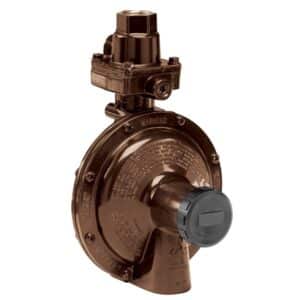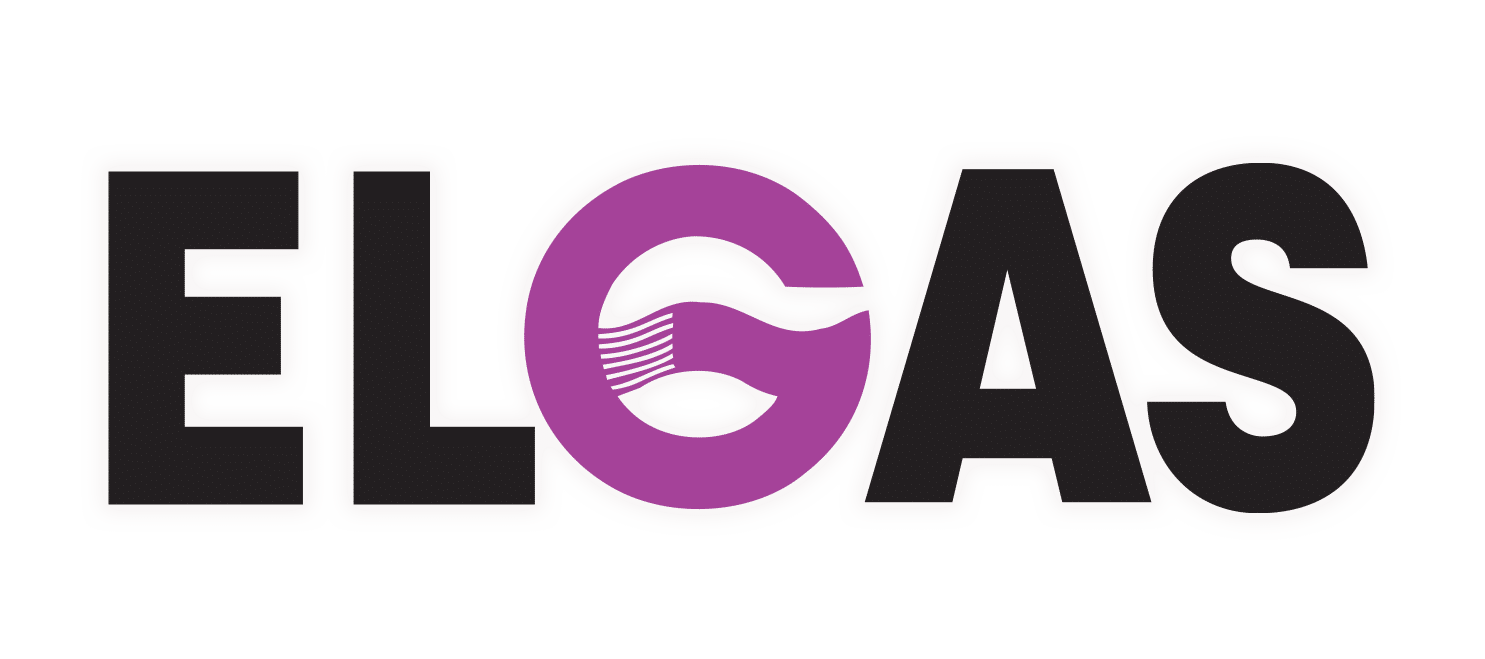Gas Regulator Pressure: LPG Pressure Regulator | LPG Gas Pressure Regulator
An LPG pressure regulator (LPG gas pressure regulator) reduces the higher pressure from the gas bottle to a gas regulator pressure at 2.75 kPa, the actual safe working pressure of the gas appliances. The LPG pressure regulator (LPG gas pressure regulator) reduces and maintains the safe operating gas regulator pressure.
 It should also be noted that natural gas and LPG appliances operate at a different gas regulator pressure, with 1.1 kPa and 2.75 kPa, respectively.
It should also be noted that natural gas and LPG appliances operate at a different gas regulator pressure, with 1.1 kPa and 2.75 kPa, respectively.
LPG gas pressure refers to the average force per unit of area that the LPG gas exerts on the inside walls of the LPG gas bottle.
The higher the temperature, the higher the pressure of the LPG within the gas bottle.
The pressure of LPG (propane) goes from 0 kPa (0 PSIG or 0 bar) at -43ºC to 2482 kPa (360 PSIG or 24.8 bar) at 70ºC and higher.
LPG (Propane) Gas Bottle Temperature – Pressure Chart
How much pressure in LPG gas bottle? It depends…
As temperature rises in an LPG gas bottle, so does the pressure.
As previously mentioned, the pressure is 0 kPa (0 PSIG or 0 bar) at -43ºC and goes up to 2482 kPa (360 PSIG or 24.8 bar) at 70ºC.
It is the job of the LPG pressure regulator (LPG gas pressure regulator) to reduce this to the 2.75 kPa gas regulator pressure required by the LPG appliances.
The LPG is both liquid and vapour (gas) inside the gas bottle.
| Temp | Temp | Pressure | Pressure | Pressure |
| ºC | ºF | kPa | PSIG | Bar |
| 70 | 158 | 2482 | 360 | 24.8 |
| 60 | 140 | 2013 | 292 | 20.1 |
| 54 | 130 | 1794 | 257 | 17.9 |
| 43 | 110 | 1358 | 197 | 13.6 |
| 38 | 100 | 1186 | 172 | 11.9 |
| 32 | 90 | 1027 | 149 | 10.3 |
| 27 | 80 | 883 | 128 | 8.8 |
| 16 | 60 | 637 | 92 | 6.4 |
| -1 | 30 | 356 | 51 | 3.6 |
| -18 | 0 | 152 | 24 | 1.5 |
| -29 | -20 | 74 | 11 | 0.7 |
| -43 | -45 | 0 | 0 | 0 |
How much pressure in LPG gas bottle? See chart above.
Units of Measure for Pressure for LPG Pressure Regulator | LPG Gas Pressure Regulator
There are 3 commonly used units of measure for pressure: PSIG, kPa & bar.
PSIG is pounds per square inch gauge. PSIA is pounds per square inch absolute.
1 atm = 14.7 psia = 0 psig = 101.325 kPa
2.75 kPa is the gas regulator pressure for appliances delivered by the LPG pressure regulator (LPG gas pressure regulator).
kPa, or kilopascal, is a metric unit of pressure and part of the International System of Units (SI).
The bar is also a metric unit of pressure, but is a non-SI unit.
1 bar = 100 kPa = 0.987 atm = 14.5038 psia
In What State is the LPG Inside the Gas Bottle ?
 LPG is both liquid and gas in a gas bottle with liquid at the bottom and gas at the top, as shown in the accompanying image.
LPG is both liquid and gas in a gas bottle with liquid at the bottom and gas at the top, as shown in the accompanying image.
LPG gas bottles are typically filled to 80%, meaning 80% liquid and 20% vapour, to allow for expansion
This percentage changes, with the liquid LPG decreasing as you consume the gas.
LPG Pressure Relief Valve and LPG Pressure Regulator | LPG Gas Pressure Regulator
The pressure relief valve is integrated into the main gas valve on the bottle, as shown in the accompanying picture. It’s actually a safety valve within a valve.
Under normal circumstances, the LPG pressure regulator (LPG gas pressure regulator) deals with the gas bottle pressure, reducing it to the gas regulator pressure.
 If the gas bottle is exposed to excessive heat, the LPG pressure relief valve allows the gas to vent and keep the pressure within safety limits.
If the gas bottle is exposed to excessive heat, the LPG pressure relief valve allows the gas to vent and keep the pressure within safety limits.
This eliminates the possibility that the gas bottle will rupture or explode.
The worst thing that can happen is the venting gas ignites and you have a plume of flame.
This will self-extinguish after the pressure drops to a safe level or when the cylinder runs out of gas.
This is why you always want to use your BBQ outdoors and away from your home or other flammable materials.
LPG Boiling Point
Did you know that every time you turn on one of your gas appliances, the LPG in your gas bottles starts to boil?
This is called LPG (Propane) Vaporisation.

If you could see though the steel, you would also notice that it looks just like water boiling (see image above).
Water boils at 100°C, becoming a gas (steam).
In contrast, LPG boils at -42°C becoming gas vapour.
The process of going from liquid to vapour (gas) is called vaporisation.
The vapour then passes through the LPG pressure regulator (LPG gas pressure regulator).
LPG in the bottom of the gas bottle stays liquid because it is under pressure in the gas bottle.
As a liquid, it looks a lot like water.
It is colourless and odourless in its natural state.
For more info on LPG, see LPG Gas Physical Properties
Operating Pressure of LPG Pressure Regulator | LPG Gas Pressure Regulator

LPG gas bottles and vessels are designed to handle much higher than normal operating pressures.
The typical gas bottle would probably only burst with pressures over 6895 kPa or 1,000 PSIG.
That’s about 5x the normal pressure.
This would vary by the manufacturer and the cylinder itself.
LPG gas bottles have pressure relief valves incorporated into the main valve, as previously discussed.
The typical pressure relief valve setting is 2585 kPa or 375 PSIG.
So, the gas bottle would never actually go above this, as the valve would open and lets some gas escape, limiting the pressure inside the cylinder.
LPG cylinder pressure varies with temperature.
Even at 70ºC (158ºF), well beyond normal ambient temperatures, the pressure would only be 2482 kPa (360 PSIG).
So, not only wouldn’t it approach bursting pressure (≈ 1,000 PSIG) but, under normal circumstances, it would never even reach the 375 PSIG required to trigger the pressure relief valve.
Once again, the LPG pressure regulator (LPG gas pressure regulator) deals with the full range of gas bottle pressure, reducing it to the gas regulator pressure.
How Much Pressure in LPG Gas Bottle | LPG Pressure Temperature Chart
So, we never fully answered “How much pressure in LPG gas bottle?”
As previously mentioned, when LPG is stored in a gas bottle, it is under pressure.
LPG vapour pressure can vary greatly based on temperature.
The higher the temperature, the higher the pressure, as shown in the chart.
LPG Pressure-Temperature Chart

The term “pressure” refers to the average force per unit of area that the gas exerts on the inside walls of the gas bottle.
The pressure is measured in kilopascals (kPa) or pounds per square inch (PSIG).
“Bar” is yet another unit of measure for pressure.
1 Bar = 100 kPa, so it is metric based but not an SI unit of measure.
The level of fill in the gas bottle comes into play when the LPG is being used, as it affects the rate of LPG vapourisation.
As LPG is a liquefied gas, the vapour pressure inside the gas bottle will remain the same from full until the last of the liquid LPG is vaporised.
Then the pressure will fall quickly as the last of the LPG vapour is used, passing through the LPG pressure regulator (LPG gas pressure regulator).
The use of pressure as a measurement in LPG use is very limited.
A steady pressure only shows that liquid LPG is inside the gas bottle, but not how much liquid is left.
In the US, vapour pressure is measured in pounds per square inch (PSIG).
PSIG is defined as 1 pound of force applied per square inch as measured by a gauge.
As a comparison, 1 psi = 6.89476 kPa.
What is the Pressure of a 20 lb Propane Tank? A 9kg LPG Cylinder?
BBQ gas bottles, like a 20lb propane tank or a 9kg gas bottle, have the same pressure as large gas bottles.
It all depends on the temperature.
At 100°F, a 20lb propane tank has 172 PSIG of pressure.
Similarly, a 9kg gas bottle has 1183kPa at 38°C.
The LPG pressure regulator (LPG gas pressure regulator) for a BBQ size bottle is smaller than the LPG pressure regulator (LPG gas pressure regulator) on a house and it screws directly into the gas bottle valve.
Final Thoughts on LPG Pressure Regulator – LPG Gas Pressure Regulator
The LPG pressure regulator (LPG gas pressure regulator) is critical to your LPG installation, as it reduces the gas pressure from the gas bottles to the appliances.
How much pressure in LPG gas bottle is dependent upon the temperature of the contents.
This, in turn, is affected by the ambient temperature.
The gas bottle is actually capable of handling about 5x the normal pressure.
That normal pressure is far more than what is required for the working pressure of gas appliances.
To reduce the pressure, the LPG pressure regulator (LPG gas pressure regulator) reduces it to the gas regulator pressure for the appliances.
“Safe and Simple” is the best summary of how it all works.
New Residential LPG customer?
New Business LPG customer?
Existing ELGAS customer?
- BBQ – Gas and Charcoal BBQ Features – Charcoal BBQ vs Gas BBQ Comparison - March 31, 2025
- GPL Gas (GPL Fuel) – GLP Gas – LPG Gasul: GLP-GPL Gas Station - March 26, 2025
- Think LPG When Building a New Home - February 26, 2025
Steve Reynolds
Technical Consultant
Steve Reynolds is a leading expert in the LPG industry with over 22 years of experience. As part of the national management team at ELGAS, Steve ensures the safe and efficient storage, handling, and transportation of LPG. He serves as the lead investigator for incidents and collaborates with authorities on industry developments.
Steve is a technical advisor to Standards Australia and Gas Energy Australia (GEA), and an active member of the World LPG Association (WLPGA), contributing to global standards and technical reviews. He holds a BSc. (Hons) in Industrial Chemistry from UNSW and has held senior safety and technical roles at ELGAS, making him a trusted authority in LPG safety and standards.
